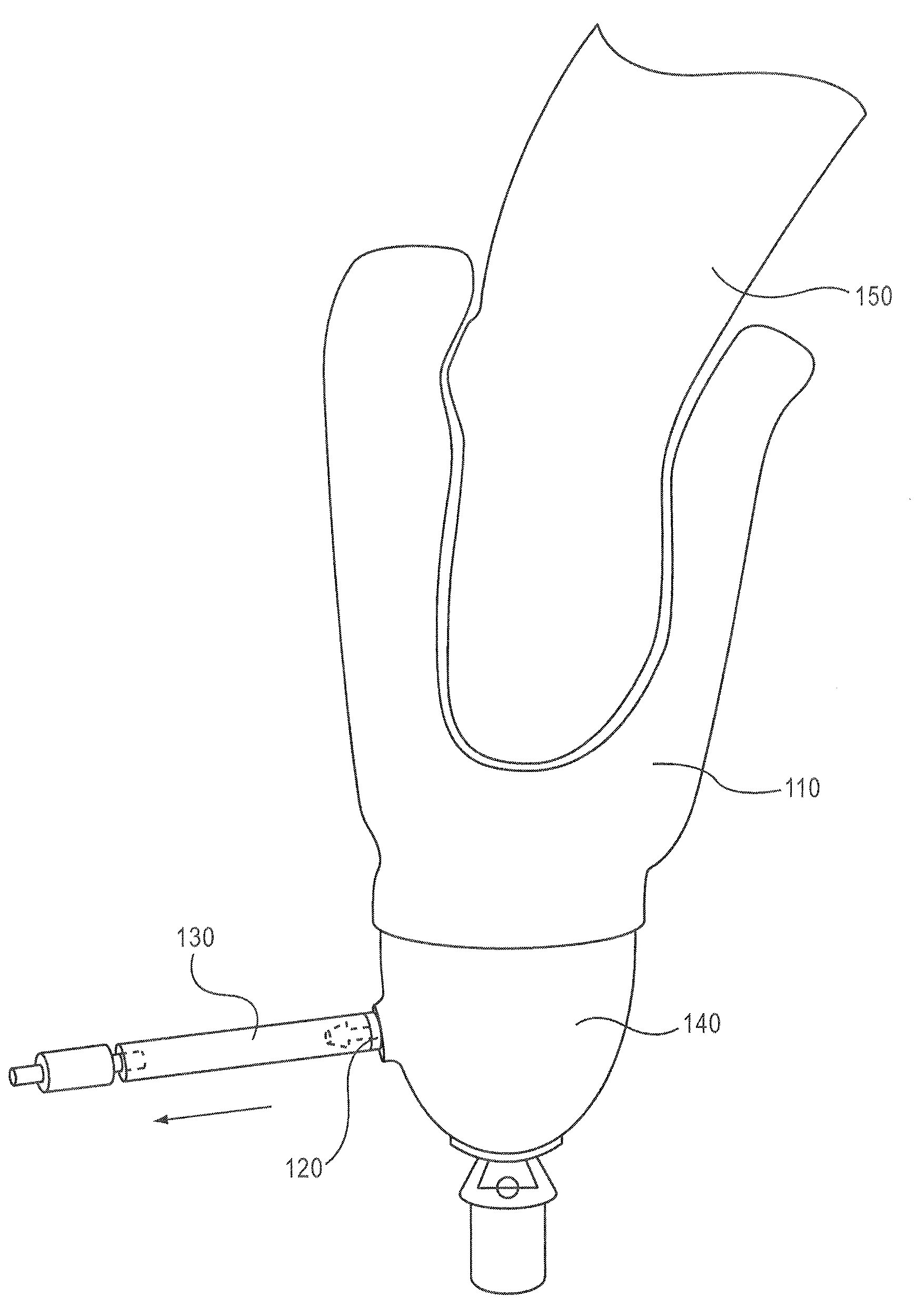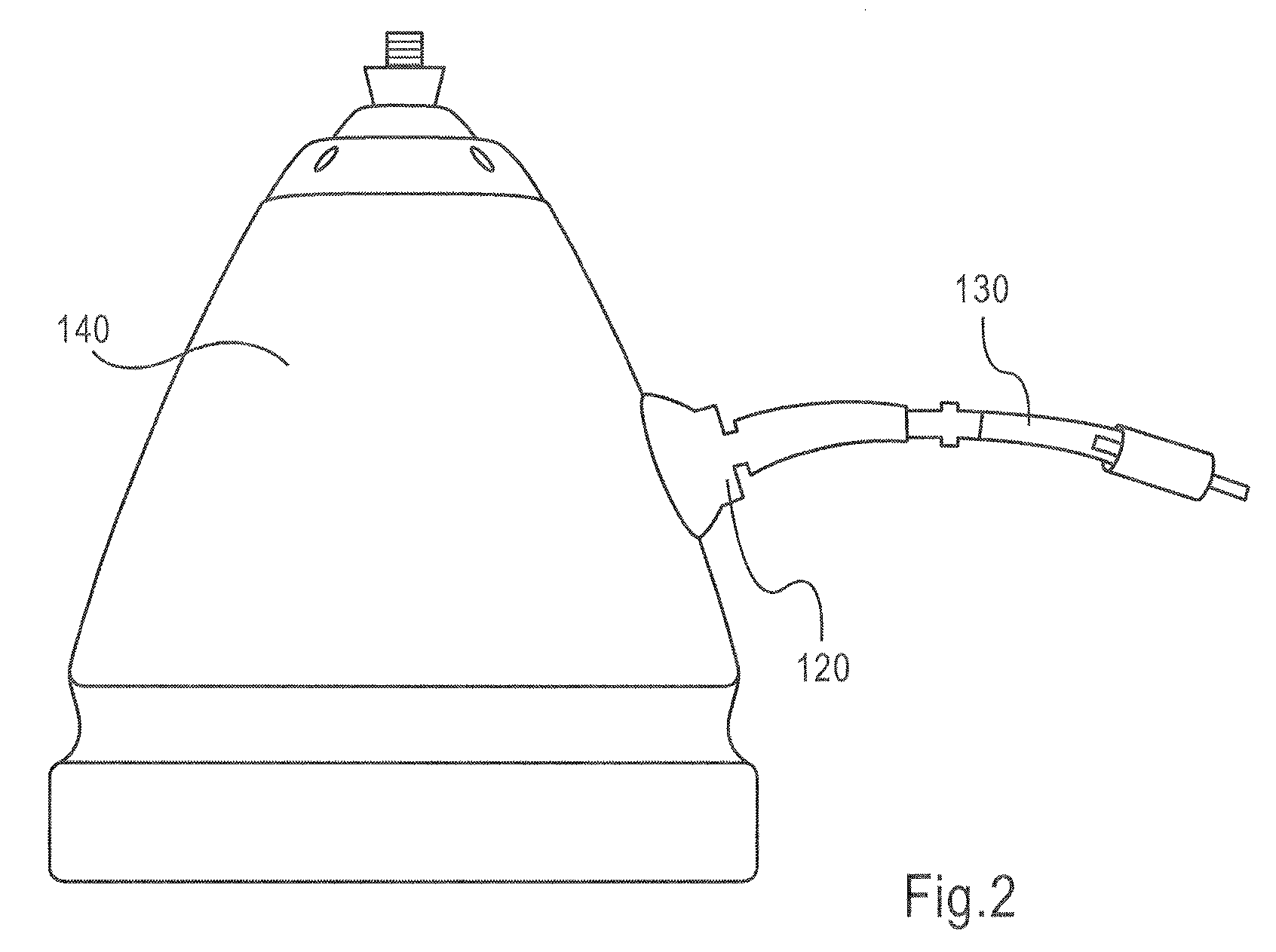Vacuum based impression and alignment device and method
a vacuum-based, alignment device technology, applied in the field of vacuum-based impression and alignment device and method, can solve the problems of inability to accurately and accurately inability to take into account the soft tissue pressure of the residual limb of the patient, and inability to perfect or otherwise sufficiently address static and dynamic alignment, etc., to achieve rapid and accurate capture of impression, accurate impression of residual limb, and perfect static and dynamic alignment of the prosthesis
- Summary
- Abstract
- Description
- Claims
- Application Information
AI Technical Summary
Benefits of technology
Problems solved by technology
Method used
Image
Examples
Embodiment Construction
[0030]These and other features and advantages of this invention are described in, or are apparent from, the following detailed description of various exemplary aspects.
[0031]FIG. 1 is an illustration of an exemplary vacuum-based impression and alignment device according to various aspects of the current invention. In FIG. 1, the malleable bag such 110 such as a gel bag is connected to the solid connector 140, and may be coupled to the one-way valve 120 via the connector 140. The gel bag 110 may be coupled to the one-way valve 120 to prevent air from filtering out of the vacuum-sealed environment or to inject air into the gel bag 110, for example. The one-way valve 120 may be inverted to permit the removal of air from the gel bag 110 to, for example, harden the gel bag 110 once a residual limb is adjusted against the gel bag 110 in order to capture the shape of the residual limb. The one-way valve 120 may also be used to facilitate the placement of the gel bag 110 on the residual lim...
PUM
 Login to View More
Login to View More Abstract
Description
Claims
Application Information
 Login to View More
Login to View More - R&D
- Intellectual Property
- Life Sciences
- Materials
- Tech Scout
- Unparalleled Data Quality
- Higher Quality Content
- 60% Fewer Hallucinations
Browse by: Latest US Patents, China's latest patents, Technical Efficacy Thesaurus, Application Domain, Technology Topic, Popular Technical Reports.
© 2025 PatSnap. All rights reserved.Legal|Privacy policy|Modern Slavery Act Transparency Statement|Sitemap|About US| Contact US: help@patsnap.com



